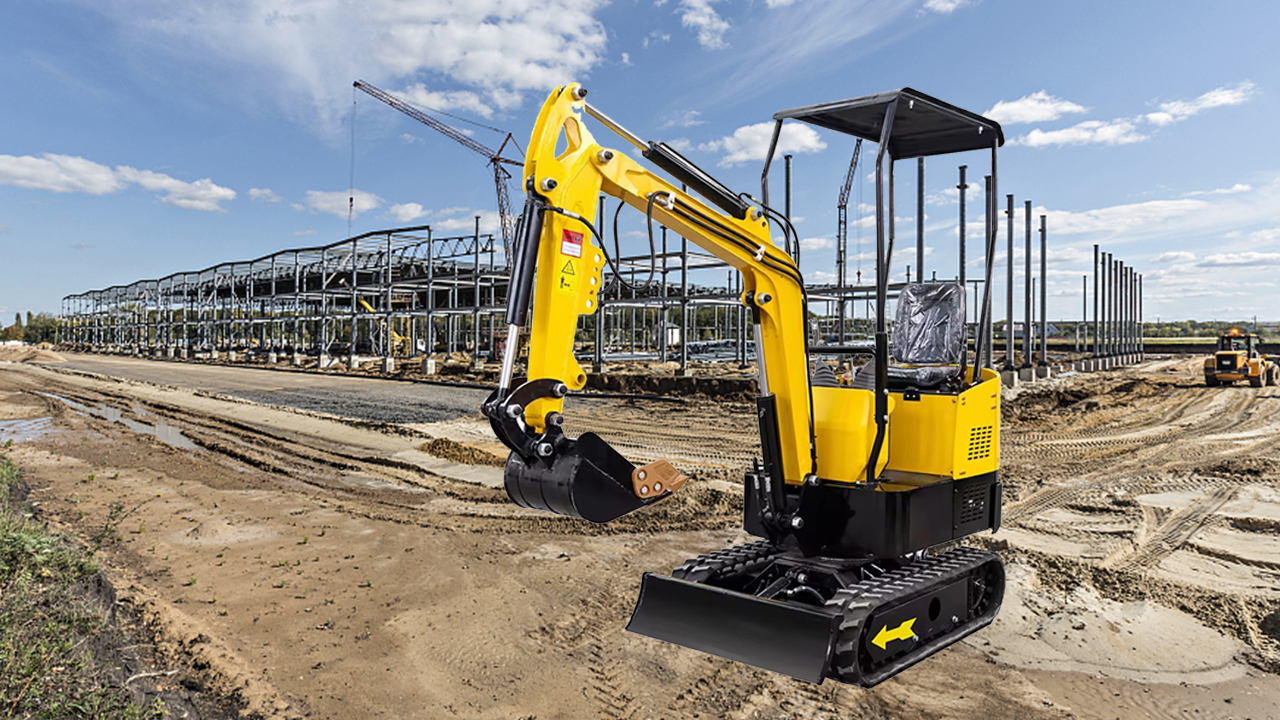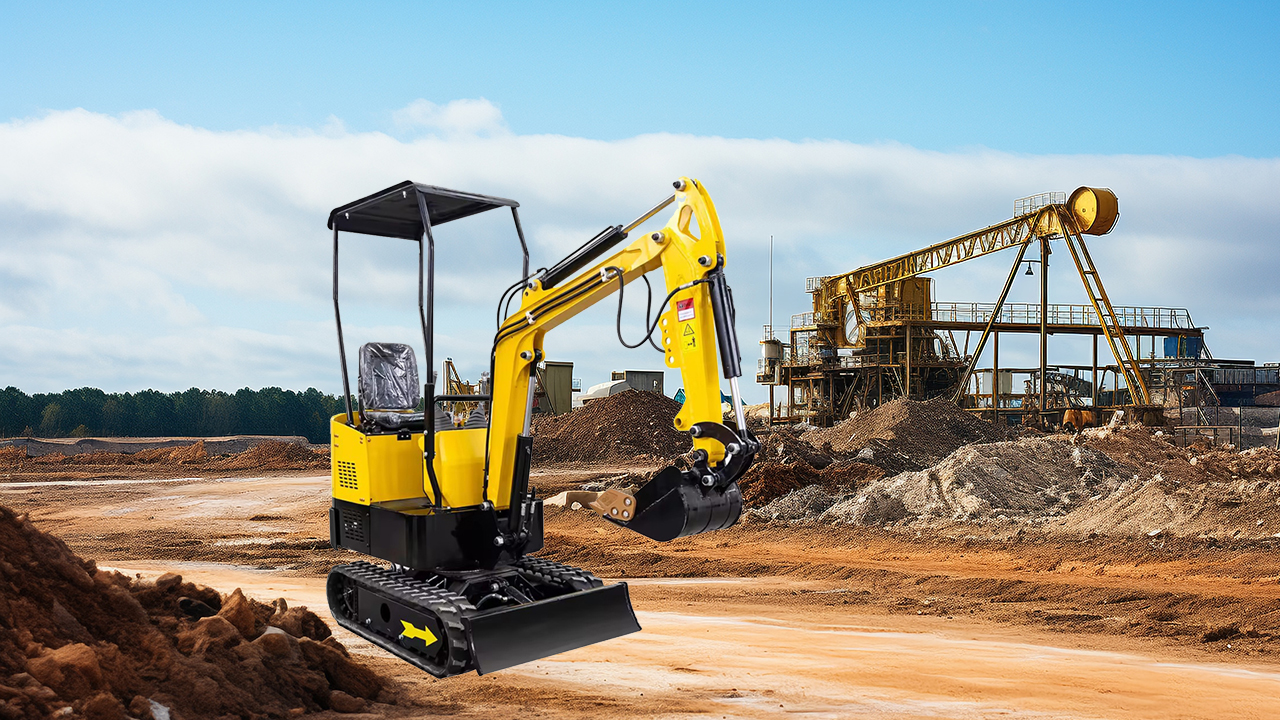Introduction
Mini excavators have become indispensable tools in the construction and landscaping industries. Their compact size and maneuverability allow them to access tight spaces and perform tasks that larger equipment cannot. However, a common question arises: how much weight can a mini excavator safely lift? The answer is not straightforward, as it depends on several factors that can significantly influence a machine's lifting capacity.

Understanding Lifting Capacity
Manufacturers often specify a "nominal lifting capacity" for their mini excavators. This figure represents the maximum weight the machine can theoretically lift under ideal conditions. However, it is essential to understand that nominal capacity is not always a reliable indicator of real-world performance.
Operational Lifting Capacity
The actual lifting capacity of a mini excavator, or its "operational lifting capacity," is influenced by a variety of factors:
· Machine Weight and Counterweight: A heavier machine with a larger counterweight can typically lift heavier loads. The counterweight provides stability, preventing the machine from tipping over during lifting operations.
· Ground Conditions: Soft or unstable ground can reduce a machine's lifting capacity. The machine's tracks or tires must have adequate traction to prevent slippage and maintain stability.
· Attachment Weight and Configuration: The weight and configuration of the attachment, such as a bucket or breaker, can impact lifting capacity. Heavier attachments will reduce the amount of weight the machine can lift.
· Operator Skill and Experience: A skilled operator can maximize a machine's lifting capacity while minimizing the risk of accidents. Proper training and experience are crucial for safe and efficient operation.
Factors Affecting Lifting Capacity
· Machine Size and Weight: Larger mini excavators, such as those in the 3-ton to 5-ton class, generally have higher lifting capacities than smaller models. However, larger machines may not be suitable for all applications, especially in confined spaces.
· Counterweight: The size and configuration of the counterweight can significantly impact a machine's lifting capacity. A larger counterweight provides greater stability, allowing the machine to lift heavier loads.
· Ground Conditions: The stability of the ground beneath the machine is critical for safe lifting operations. Soft or uneven ground can reduce a machine's lifting capacity and increase the risk of tipping.
· Attachment Type and Weight: Different attachments have varying weights and impact the machine's lifting capacity. Heavier attachments, such as breakers, will reduce the maximum weight the machine can lift.
· Operator Skill and Experience: A skilled operator can optimize a machine's lifting capacity by using proper techniques and avoiding overloading.
Safe Lifting Practices
To ensure safe and efficient lifting operations with a mini excavator, it is essential to follow these guidelines:
· Adhere to Manufacturer's Guidelines: Always consult the operator's manual for specific instructions and limitations.
· Visual Inspections: Before operating the machine, conduct a thorough inspection to identify any damage, wear, or loose components.
· Pre-Lift Assessment: Evaluate the ground conditions, load weight, and machine stability before attempting to lift a load.
· Safe Lifting Techniques: Use smooth, controlled movements to lift and lower loads. Avoid sudden starts and stops, which can destabilize the machine.
· Emergency Procedures: Be prepared for emergencies by knowing how to safely shut down the machine and evacuate the area.

Case Studies and Real-world Examples
To illustrate the importance of understanding lifting capacity, let's examine a few real-world examples:
· Successful Lifting Operations: A skilled operator successfully lifted a heavy concrete slab using a 3-ton mini excavator by carefully assessing the ground conditions and using proper lifting techniques.
· Lifting Accidents and Lessons Learned: A less experienced operator attempted to lift a load that exceeded the machine's capacity, resulting in a tip-over accident. This incident highlights the importance of adhering to manufacturer's guidelines and avoiding overloading.
Conclusion
While mini excavators are versatile machines capable of performing a wide range of tasks, it is crucial to understand their limitations, particularly when it comes to lifting capacity. By carefully considering the factors that influence lifting capacity and following safe operating practices, operators can maximize the efficiency and safety of their equipment.
Additional Considerations
· Hydraulic System Capacity: The hydraulic system's capacity can limit the speed and power of lifting operations.
· Stability Control Systems: Some modern mini excavators are equipped with advanced stability control systems that can help prevent tip-overs.
· Future Trends and Innovations: Ongoing technological advancements may lead to increased lifting capacities and improved safety features in future mini excavator models.
By following these guidelines and staying informed about the latest advancements, operators can ensure the safe and efficient use of mini excavators for a wide range of lifting applications.
Post time:Nov.05.2024
